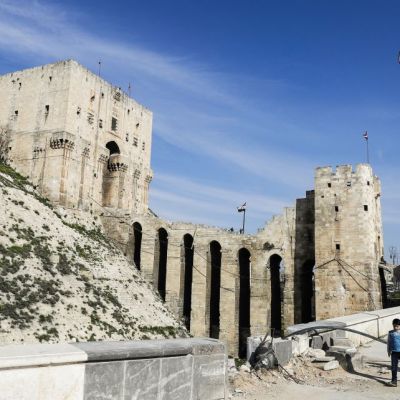In an interview with the Wall Street Journal in 2016, the king of gallerists, Larry Gagosian, cheekily suggested that his gallery would ‘go on forever’. But stability and legacy are not words that many connect with the global art market at present, and many commentators have suggested that the traditional bricks-and-mortar gallery model is dead. Given today’s rapidly changing art world, do many contemporary art galleries stand a chance of surviving long into the future?
Ever since Leo Castelli established his New York gallery in 1957 – the pioneering example of a contemporary art gallery – the intimate relationship between gallerist, artists and collectors has been at the core of a very personalised business model, with galleries usually bearing the name of their founder above the door. The perceived magic touch of the gallerist, and the credibility of his or her name, have often made for a prosperous business. It seems logical that the life cycle of a gallery rises and falls with the life cycle of its founder, and of his or her artists and clients. Perhaps there is something paradoxical about a gallery claiming to represent what is contemporary while plotting its own longevity in the first place.
Nevertheless, some of the most important galleries of the 1960s and ’70s, including Castelli, the (Ileana) Sonnabend Gallery, New York, and the Konrad Fischer Galerie in Düsseldorf (and latterly Berlin), carry on but struggle to keep their original momentum going. As Nick Paumgarten wrote in the New Yorker in 2013: ‘Very few galleries have thrived into a second generation. Pace is trying, Marlborough is fading, and Knoedler & Company went under […]’. Knoedler belongs to a different part of the art market than the contemporary galleries that interest us here; the dealership had already been in existence for 165 years when it closed. In the secondary and antiques markets there are many cases of dealerships founded in the 19th century or earlier that have stood the test of time.
Since the 1960s, a key question to the long-term survival of contemporary galleries has been whether the trust bestowed by artists and collectors on the gallerist can be passed on, whether to family members of the founder or to others. The late Leslie Waddington, who had already been a second-generation gallerist working in his father’s gallery (founded in 1957) before opening his own space in 1966, sold 50 per cent of his company’s shares to French dealer Stéphane Custot in 2011; the gallery continues to run successfully under the name Waddington Custot. Other gallerists have chosen to close their galleries during their lifetime. Anthony d’Offay, who opened his seminal gallery in London in 1965, decided to close in 2001 and several years later donated his private collection to the nation. Similarly, Yvon Lambert, whose gallery ran from 1966 to 2014, closed first his New York location and then his main space in Paris to focus on his collection in Avignon.
Other gallerists have passed on their passion for art to the next generation while still closing down their own original galleries. The influential post-war gallerist John Kasmin ran the Kasmin Gallery from 1963 until 1972 – one of the first white-cube style galleries in London, the legacy of which has been explored this year in a display at Tate Britain. He is the father of Paul Kasmin, whose New York gallery opened in 1989. Rudolf Zwirner, one of the greatest German gallerists of his time, has stated publicly that when his son David became interested in running a gallery, he told him to do so only through his own devices. David Zwirner subsequently opened his own gallery far from his native Cologne, in New York in 1993, the year after Rudolf closed the gallery that he had led from 1959.
Today, David Zwirner has surely matched his father’s historical status as an art dealer. But what does the idea of legacy mean today, when so-called mega-galleries, such as Zwirner, Pace, Gagosian, Lisson, or Hauser & Wirth, have evolved into businesses with scores of employees, representing large numbers of living artists and artists’ estates while maintaining multiple branches across the globe? Having moved so far from the personalised business model outlined above, it is hard to imagine how founding gallerists can maintain an intense connection with artists or collectors any more; in essence, they run medium-sized enterprises. At this scale, is a gallery more likely to ‘go on forever’, if the gallerist is not so directly involved with artists and collectors and has become more like any other company CEO?
Alex Logsdail, who for several years has been a partner in Lisson Gallery, working alongside his father Nicholas (who founded the gallery in 1967) and directing Lisson Gallery New York, does not believe so: ‘If galleries were run as independent businesses without having someone who has been deeply involved in the gallery for a very long time, it wouldn’t work.’ He believes that the history and existing legacy of the gallery are of crucial importance to its continuing success, but also that even today a gallery cannot succeed without a figurehead who dedicates his or her life to it. As Larry Gagosian told the Wall Street Journal, ‘It’s not easy in this business, because it’s very much about me or whoever that me is.’
Of course, in today’s risk-averse climate, historical artists and their estates are much more of an asset to leading galleries today than they were in the 1990s, when the currency of a gallery was still largely dependent on showing the newest and hottest artists rather than maintaining and developing the market for dead artists. Since blue-chip galleries have the greatest resources to invest in established post-war art, and because those historical artists’ reputations (and prices) are burnished by their association with a big gallery brand, a new relationship seems to be developing between these artists and galleries that looks set to ensure the continued success of the latter.
If all seems rosy for the blue-chip galleries, the future is less certain for the rest of the contemporary market. Many smaller galleries have been struggling for a number of years, not so much because they are trying to maintain a legacy but due to the difficulty of financial survival in the first place. Only recently Laura Bartlett Gallery and Carroll/Fletcher Gallery, both in London, have announced they are to close – and they are by no means the first in London or Europe.
Is there a future for the traditional model? Can those smaller galleries, whose founding directors have close links to one generation of artists and collectors, hope to regenerate themselves? Some believe so. In 2008, Stefan von Bartha took charge of his parents’ business, von Bartha in Basel, a gallery that was founded in 1970. He is aware of the crucial importance of the historical artists that the gallery represents and of the secondary market deals that keep the gallery afloat. As he says: ‘They have higher prices, you need this to survive; they finance shows with the younger artists’. His attempt to integrate a fresh contemporary focus into the gallery programme is laudable, as are his wider efforts to protect the business built up by his parents while rejuvenating it with his own personal touch. In the current climate, however, it is doubtful that many recently founded galleries will ever reach the stage when they need to reflect on succession.
From the October 2017 issue of Apollo. Preview and subscribe here.



